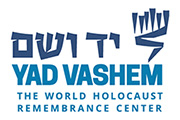Yad Vashem Studies is an academic journal featuring articles on the cutting edge of research and reflection on the Holocaust. Yad Vashem Studies is a must for any serious library seeking to offer the essential texts on the Nazi era and the Holocaust. “Yad Vashem Studies has been at the forefront of research into the Nazi persecution and mass murder of the Jews, its origins and its consequences… indispensable for researchers and teachers alike. No library that purports to offer students and teachers the essential historical texts on the Nazi era and the fate of the Jews can afford to be without Yad Vashem Studies.” [David Cesarani, The Journal of Holocaust Education] Beginning with volume 35, Yad Vashem Studies comes out twice annually, in spring and fall, making our contributors’ important research available to our readers more quickly and more readily. We have also redone our layout in order to make it more reader friendly. Our rigorous high standards remain unchanged.
Table of Contents: Introduction Elie Wiesel: The Man and His Legacy (Steven T. Katz) Herman Kruk: "Memento mori" – Poetic Witnessing Prose Poems and Lyric Images from the Klooga Concentration Camp (Gudrun Schroeter) About "Jewish Things": Jewish Property in Eastern Galicia During World War II (Anna Wylegała) "Californian" Colonists versus Local Profiteers? The Competition for Jewish Property During the Economic Colonization of Bukovina, 1941-1943 (Ştefan Cristian Ionescu) Conceptualizations of the Holocaust Within Polish Historical Discourse (Katrin Stoll) Visualizing Perpetrators and Victims in Post-Communist Memorial Museums (Ljiljana Radonić) Reviews: On the Advantage and Disadvantage of the 2016 Model of Mein Kampf : Review of Christian Hartmann, Othmar Plöckinger, Roman Töppel, and Thomas Vordermayer, eds., Hitler, Mein Kampf: Eine kritische Edition (Moshe Zimmermann) Holocaust, War, and Contingency: Review of David Cesarani, Final Solution: The Fate of the Jews 1933–1949 (Christopher R. Browning) Dispersing the Fog: The OUN and Anti-Jewish Violence in 1941: Review of Kai Struve, Deutsche Herrschaft, ukrainischer Nationalismus, antijüdische Gewalt: Der Sommer 1941 in der Westukraine (Per Anders Rudling) Uniqueness in Context: Review of Ian Kershaw, To Hell and Back: Europe 1914–1949 (Otto Dov Kulka) Convergence and Divergence – The Shoah in Subcarpathian Rus’: Review of Raz Segal, Genocide in the Carpathians: War, Social Breakdown, and Mass Violence, 1914–1945 (Robert Rozett) Romania and the Holocaust in the East – The Story of the Kishinev/Chișinău Ghetto: Review of Paul A. Shapiro, The Kishinev Ghetto 1941–1942. A Documentary History of the Holocaust in Romania’s Contested Borderlands (Simon Geissbühler)
